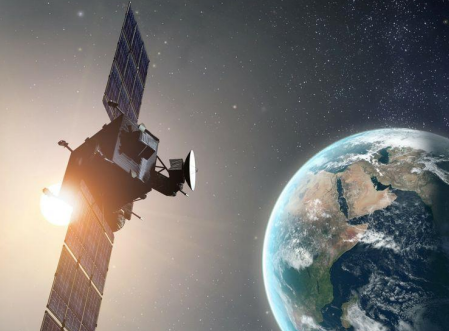The US Space Force will propose an $8 billion nuclear-survivable satellite system to the government.
This is precisely the Evolved Strategic Satellite Communications System (ESS), an artificial constellation designed for military communications (MILCOM) and PNT (Positioning, Navigation, and Timing). The US Armed Forces' space service branch explained why ESS would greatly benefit the United States, especially its military troops.
US Space Force to Propose $8 Billion Nuclear-Survivable Satellite System

The US Space Force said that its Space Systems Command is expected to issue a request for proposals for ESS as early as 2024.
"We have a request for proposals coming in January for the space vehicle piece," said Space Systems Command's MILCOM and PNT Program Executive Officer Cordell DeLaPena via SpaceNews.
However, this military satellite constellation will not be cheap as it is estimated to cost around $8 billion.
For those wondering why this space system is super expensive, DeLaPena explained that ESS would be a survivable and jam-resistant satcom for the NC3 (nuclear command, control, and communications) mission.
He shared this detail during the previous AFCEA Space Industry Days conference, which happened last week in Los Angeles. DeLaPena said a satellite system designed for the NC3 mission could ensure the national command authorities' communications on land, in the air, and at sea.
The Space Systems Command official explained that the ESS constellation can secure control of strategic forces even during a nuclear war.
"SSC programs like ESS are embracing increased competition to deliver world-class capabilities that stay ahead of the threat and secure the interests of the US and its allies," said the US Space Force via its official ESS document.
Other Things To Know About ESS

The upcoming ESS satellites are expected to replace and augment the Advanced Extremely High Frequency (AEHF) nuclear-hardened satellite network. However, the Evolved Strategic Satellite Communications System is still non-existent since Northrop Grumman and Boeing are still building the satellite system's prototypes as of press time.
Once they are near completion, the ESS prototypes that the two aerospace companies are working on will be evaluated in a side-by-side competition.
This means that Northrop Grumman and Boeing will be competing for the production contract offered by the US Space Force to develop its ESS.
If you want to learn more about the Space Force's upcoming nuclear-survivable satellite constellation, you can click this link.








